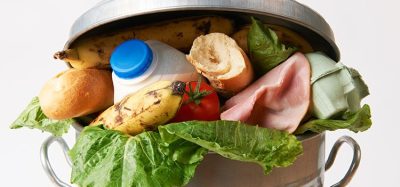The perfect microbiological match
- Like
- Digg
- Del
- Tumblr
- VKontakte
- Buffer
- Love This
- Odnoklassniki
- Meneame
- Blogger
- Amazon
- Yahoo Mail
- Gmail
- AOL
- Newsvine
- HackerNews
- Evernote
- MySpace
- Mail.ru
- Viadeo
- Line
- Comments
- Yummly
- SMS
- Viber
- Telegram
- Subscribe
- Skype
- Facebook Messenger
- Kakao
- LiveJournal
- Yammer
- Edgar
- Fintel
- Mix
- Instapaper
- Copy Link
Posted: 4 September 2020 | Andy Muirhead | No comments yet
Andy Muirhead, ALS Company Microbiologist, explains how to choose the most appropriate microbiological specification for your specific product.


When we work with a new client, one of the first questions they often ask is: ‘What is the most appropriate microbiological specification I need to request for my product?’
The term ‘specification’ is normally regarded as the list of tests which are considered to be appropriate for a particular food type. The applied criteria are the acceptable levels for the organism listed in the specification. This may cover the organisms tested to demonstrate food safety (pathogens), organisms which help to validate that a product retains its desirable organoleptic qualities (spoilage organisms), and organisms which give an indication of good manufacturing process and help to show process and environmental control in the manufacturing environment (indicator organisms/trending markers).
If you supply to one of the retailers, then they will have a set of microbiological specifications and applied criteria for all of the food matrices which they sell. It should, therefore, be fairly straightforward to find the category which applies to your product and employ the relevant specification and criteria. However, as suppliers to more than one retailer will know, different retailers will have different specifications for the same products which are often manufactured under identical conditions.
Choosing the most appropriate specification which applies to your particular product can also be quite difficult. Specifications for a diverse range of product types are quite often grouped together; for example, ‘cooked meat and poultry’. However, even individual items or stock keeping units (SKUs) which are produced in the same factory will have different cooking times, various amounts of post cook handling, and different intrinsic properties such as pH and water activity (Aw). In theory, every SKU should have its own individual specification with its own applied criteria, but in reality, we (and the retailers) will apply a generic specification to a wide range of products.
The ideal way to set an appropriate unsatisfactory or fail criteria would be to plot a standard distribution bell curve of all of the historical results of a particular product for each individual test. Figures which are greater than a +2 Standard Deviation will equate to the top two percent within the normal expected range, so an upper limit could be set at this value. The data used would have to correspond to products that all gave satisfactory organoleptic data at the time of testing. This approach would give a better representation of the microbiological composition of the individual products, and only highlight ‘true’ out of specification levels, and not values which would naturally fall within, albeit at the top end of the expected range of results. However, this is difficult, time consuming and costly to perform, so generic categories such as ‘cooked sliced meats’ or ‘fresh cream products’ are often applied.
Irrespective of any microbiological testing, all products should be subjected to a Microbiological Risk Assessment (MRA) during the product development stage. This should identify pathogens and spoilage organisms which are relevant to any particular product and it should identify the processing steps which are designed to minimise the presence of these organisms. This should help in determining what the appropriate tests should be. The risk assessment should also serve as a guide to establish the frequency of testing.
The rationale for food micro testing can be split into three main objectives:
1. Testing for pathogens
2. Testing for spoilage organisms
3. Testing for organisms which are trending markers.
Here is a list of the most commonly requested organisms when testing for pathogens, spoilage and indicator tests:
Pathogens
- Salmonella – A natural gut inhabitant of many of the animals used in food production. Has the ability to persist in low water activity, low pH environments so tends to be included in most specifications, even foods that are going to be heat treated before consumption
- STEC E. coli – The Shiga Toxin coli tests (a set of six tests performed by PCR) can only be done by a few specialist labs. The test for the most common organism in this group is E. coli 0157. Relevant to test in raw meat (especially beef, venison, boar), but there have been outbreaks associated with salad products and unpasteurised cheese
- Listeria monocytogenes – Its relevance in raw meat is questionable as we are likely to find it, so it tends only to be included in specifications for Ready to Eat (RTE) products. The test will also detect the non-pathogenic members of the group
- Campylobacter – Will be present in raw poultry but can still be monitored to assess prevalence. Is easily killed by cooking, so not usually included in the specifications of cooked products unless there are concerns regarding potential cross contamination
- Vibrio parahaemolyticus – This salt tolerant organism can be found in shellfish so is included in specifications for these types of products
- Coagulase Positive Staphylococci – These organisms produce a heat stable toxin when growing on the food. The organisms are carried on the skin of humans and animals, so this test is included in many specifications for different food matrices – especially anything where the manufacturing process involves manual handling.
- Bacillus cereus – This spore-producing organism is common in dried products such as cereals and rice and is usually included in the specifications for these types of products
- Clostridium perfringens – This spore-forming anaerobic organism is present in the intestines of humans and animals. It is therefore relevant to test for this bacterium in any foods containing raw meats, especially if they are packed under modified atmospheres or vac packed. Even if the samples are not vac packed, they may still be present in high numbers if the manufacturing process facilitates anaerobic conditions. For example, large volumes leading to poor oxygen penetration.
Spoilage organisms
- Yeasts and moulds – These two common spoilage organisms are both tested for by a single test, so they nearly always appear on specifications together. Typically, they grow in products rich in carbohydrates and they can grow in low water activity and acidic environments. Spoilage by yeasts and moulds is usually seen more in longer shelf life products, so testing for these organisms in short shelf life refrigerated products is not always necessary


- Pseudomonas spp – This group of organisms is responsible for organoleptic changes to a range of products from raw meats (especially fish and poultry) and fresh produce. It is an obligate aerobe so does not always grow well in the TVC test which uses the pour plate technique
- Lactic Acid Bacteria (LAB) – As the name suggest, this group of bacteria can grow in acidic environments so tend to cause spoilage in fruit juices and marinades.
Reacting to results
If the lab encounters out-of-specification (OOS) results for pathogens in an RTE product, then the client must always take action and needs to be informed directly. Pathogens may be present in raw products, but there is legislation, such as EU2073/2005, which stipulates the levels of pathogens in raw as well as processed materials.
If the lab gets OOS for spoilage organisms, the client needs to be aware that this may have an impact on the shelf life and the organoleptic quality of the product. Quite often these OOS results need to be assessed alongside the organoleptic results of the product, as sometimes high levels of potential spoilage organisms appear to have very little effect on the sensory quality of the product.
If the lab gets OOS results for the trending markers, then the client needs to establish if this is a one-off spike result or part of an upward trend which may signify a breakdown in the manufacturing process.
Specification and criteria relevant to your product
The EU 2073/2005 regulation on the microbiological criteria for foodstuffs outlines the legislative requirements, and there are helpful publications such as the IFST Microbiological Criteria for Foods and PHE (HPA) Guidelines for ready to eat foods.
The EU 2073/2005 regulation on the microbiological criteria for foodstuffs outlines the legislative requirements, and there are helpful publications such as the IFST Microbiological Criteria for Foods and PHE (HPA) Guidelines for ready to eat foods, but in general…
- Pathogens – For Salmonella, STEC, Vibrio, Campylobacter. Criteria is always absence or ‘not detected’ usually after testing 25g of sample. The criteria for monocytogenes are slightly more complex as they depend on whether the organism is capable of growing in the food. If the manufacturer has evidence that Listeria cannot grow, then the ‘satisfactory’ criteria is <100cfu/g
- Coagulase Positive Staphylococci – levels of >10,000 in RTE foods are considered unacceptable, with a target level of <20cfu/g generally regarded as satisfactory
- Bacillus cereus – levels of >100,000 in RTE foods are considered unacceptable, with a target level of <1,000cfu/g generally regarded as satisfactory
- Clostridium perfringens – levels of >10,000 in RTE foods are considered unacceptable, with a target level of <10cfu/g generally regarded as satisfactory.
It is important to remember that ‘safe’ or ‘acceptable’ levels of potential pathogens are very much governed by host susceptibility, and it may be that vulnerable individuals experience symptoms of illness following consumption of much lower levels of these organisms.
For the organisms used as trending tools, the whole point is to establish if there are upward trends which indicate a loss of process control. Thus, establishing definitive criteria for these tests is not always appropriate. However, the HPA guidelines offer the following advice:
- Enterobacteriaceae – levels of >10,000 in RTE foods are considered unacceptable, with a target level of <100cfu/g regarded as satisfactory
- E. coli – levels of >100 in RTE foods are considered unacceptable, with a target level of <10cfu/g regarded as satisfactory
- TVC – The acceptable limits for TVC depend on the food matrix. For example, for ambient stable canned, bottled or carton foods, levels of <10 would be the target criteria; for non-dairy bakery products <10,000 would be the target. In the food categories, confectionary with fresh cream, extended life refrigerated products, ready to eat meats, and cold smoked fish and foods mixed with dressings, a satisfactory criterion of <100,000 or even <1,000,000cfu/g is quoted by the HPA in its ready to eat guidelines.
It must be borne in mind when interpreting the results of spore-forming organisms (moulds, Clostridium perfringens, Bacillus cereus) that the intrinsic properties of the food (pH, Aw) and the extrinsic factors which are applied to the food (temperature, atmospheres) may inhibit the germination of the spores. In sample preparation, we perform a 1:10 dilution and effectively dilute out the inhibitory properties; so just because we can demonstrate the presence of the spore forming organisms in the lab, does not necessarily mean that they would be able to germinate and grow in the food itself during its shelf life under normal storage conditions.
The following is a typical specification, including the most commonly requested tests:
- TVC – Remember not always applicable, especially for fermented products and fresh produce as levels will be naturally high
- Enterobacteriaceae – Not suitable for fresh produce as levels may be naturally high
- coli – Included in most specifications. A reliable indicator of faecal contamination
- STEC or E. coli 0157 – Raw meats (beef/venison), fresh produce
- Coagulase Positive Staphylococci – Especially when products have been handled
- B cereus – Particularly, if there is cereal or rice in the product
- Cl perfringens – Specifically if the product is of meat origin and is vac packed or in MAP
- Salmonella – Included in most specifications
- Listeria monocytogenes – Only for Ready to Eat products
- Yeasts & Moulds – For low water activity, low pH foods. Not always applicable for proteinaceous/ short shelf life foods
- Lactic Acid Bacteria – Can be included in acidic foods and long shelf life dairy products
- Pseudomonas – Often included in raw poultry/fish specifications to check for potential spoilage
- Campylobacter – Used in raw poultry and sometimes cooked (to check for cross contamination) poultry specifications
- Vibrio parahaemolyticus – Included in specifications for fish and marine shellfish.
Generic specifications relating to a broad product type can be used as a guide, but the specific intrinsic properties, manufacturing process, shelf life, etc., of the product may make adherence to specific criteria unrealistic.
Sound knowledge of the product will help to interpret results. It has to be remembered that ‘one size does not fit all’, and in many cases, there may be very good reasons as to why one particular product will fail to meet the criteria in its chosen specification. When this happens continually, then the applied specification may be inappropriate for a specific product, and often, either a derogation from the applied specifications needs to be sought from the retailer/end user or an alternative specification needs to be applied to the product.
About the author
After graduating from Manchester Metropolitan University with a BSc (Hons) In Biological Sciences, Andy Muirhead joined the Leeds Regional Public Health Laboratory. In 1985, he gained a Fellowship in Biomedical Sciences, and in 1987, founded and ran an independent Food Contract Laboratory based in Leeds, which was later acquired by Eclipse Scientific Limited in 2011. Following the acquisition of Eclipse by ALS, Andy was appointed as the UK Company Microbiologist which involves the provision of technical assistance, training and consultancy services to both ALS colleagues and clients. In 2016, Andy won the Society of Food Hygiene and Technology (SOFHT) Trainer of the Year award.
For further information, visit: www.als-testing.co.uk.
Issue
Related topics
Contaminants, Food Safety, Lab techniques, Mycotoxins, Pathogens







